CalciVit
₨520
Vital bone support
- Strengthens teeth
- Prevents Bone Loss
- Significantly Reduces Risk of Fractures
- Ensures durable bones
- Supports healthy muscle contractions
- Description
- Reviews (0)
Description
COMPOSITION:
Each CalciVit Tablet contains: Calcium (as Calcium carbonate from natural origin) (BP) 400mg, Cholecalciferol from natural origin (BP) 400IU.
Mfg. Specs: USP
Each CalciVit Plus Tablet contains: Calcium carbonate (BP) 400mg, Vitamin D (BP) 400IU, Magnesium (as magnesium Sulphate) (BP) 100mg, Zinc (as Zinc Sulphate) (BP) 4mg.
Mfg. Specs: BP
DESCRIPTION:
Calcivit tablets contain Calcium and Vitamin D3 that help keeping bones strong for all ages, supporting optimal bone health throughout your lifetime. Calcium is utilized by every cell in our body including in nervous system, muscles, and heart. Calcium also contributes to gaining energy, yielding metabolism and neurotransmission, as well as having a role in the process of cell division. Vitamin D contributes to the normal absorption and utilization of Calcium. Calcivit Plus also contains Magnesium and Zinc. Magnesium contributes to energy production and bone health as well as helps in the normal function of the nervous system, with calcium contributing to normal neurotransmission. Zinc aids in antioxidant processes and helps in normal growth and development. CalciVit & CalciVit Plus help in normal functions of body, especially bone formation and maintenance.
MODE OF ACTION:
Vitamin D and calcium are among the two most important substances necessary for bone growth. Calcium directly builds bone and body needs optimal amounts of Vitamin D to maximize calcium absorption.
Vitamin D3
Bones health: Vitamin D3 helps in improving calcium absorption and supporting bone health. Vitamin D promotes calcium absorption in the gut, maintaining adequate serum calcium and phosphate concentrations which enable normal mineralization of bone and to prevent hypocalcemic tetany. It is also essential for bone growth and bone remodeling by osteoblasts and osteoclasts. Without sufficient Vitamin D, bones can become thin, brittle, or misshapen.
Osteoporosis: Osteoporosis is most often associated with inadequate calcium intakes, but insufficient Vitamin D contributes to osteoporosis by reducing calcium absorption. Together with calcium, Vitamin D also helps to protect older adults from osteoporosis.
Cancer: Vitamin D has other roles in the body, including modulation of cell growth, neuromuscular and immune function, and reduction of inflammation. Many genes encoding proteins that regulate cell proliferation, differentiation, and apoptosis are modulated in part by Vitamin D.
Other conditions: Vitamin D might play some role in the prevention and treatment of type 1 and type 2 diabetes, hypertension, glucose intolerance, multiple sclerosis.
Calcium
Bone health and osteoporosis: Calcium is a major building-block of bone tissues and skeleton. The calcium in our bones also acts as a ‘reservoir’ for maintaining calcium levels in the blood, which is essential for healthy nerve and muscle functioning. Osteoporosis, a disorder characterized by porous and fragile bones. It is mostly associated with fractures of the hip, vertebrae, wrist, pelvis, ribs, and other bones. When calcium intake is low or ingested calcium is poorly absorbed, bone breakdown occurs as the body uses its stored calcium to maintain normal biological functions. Bone loss also occurs as part of the normal aging process, particularly in postmenopausal women due to decreased amounts of estrogen. Many factors increase the risk of developing osteoporosis including being female, thin, inactive, or of advanced age, smoking, drinking excessive amounts of alcohol and having a family history of osteoporosis. Supplementation with calcium plus Vitamin D has been shown to be effective in reducing fractures.
Cardiovascular disease: Calcium has been proposed to help reduce cardiovascular disease (CVD) risk by decreasing intestinal absorption of lipids, increasing lipid excretion, lowering cholesterol levels in the blood, and promoting calcium influx into cells.
Magnesium
Bone Health:
Magnesium plays an important role in forming bone mineral. Magnesium assures the strength and firmness of bones. As with calcium, the majority of the body’s reserves of magnesium are held in the bone (60%), and the bones act as a storage reservoir, transferring magnesium into the blood stream in times of need.
Osteoporosis: Magnesium is involved in bone formation and influences the activities of osteoblasts and osteoclasts. Magnesium also affects the concentrations of both parathyroid hormone and the active form of Vitamin D, which are major regulators of bone homeostasis.
Zinc
Bone Health: In bone metabolism, zinc is needed to produce the matrix of collagen protein threads upon which the bone-forming calcium–phosphorus compound is deposited. It’s also necessary for the production of enzymes that degrade and recycle worn-out bits of bone protein. Proper calcium absorption also depends on zinc, and a deficiency prevents full absorption of calcium. It’s essential for bone healing, and increased amounts are found at the sites of bone repair. Low levels of zinc in the body have been closely linked with osteoporosis.
Immune function:
Severe zinc deficiency depresses immune function, and even mild to moderate degrees of zinc deficiency can impair macrophage and neutrophil functions, natural killer cell activity, and complement activity. The body requires zinc to develop and activate T-lymphocytes. Individuals with low zinc levels have shown reduced lymphocyte proliferation response to mitogens and other adverse alterations in immunity that can be corrected by zinc supplementation. Low zinc status has been associated with increased susceptibility to pneumonia and other infections in children in developing countries and the elderly.
PHARMACOKINETICS:
Calcium
Calcium is essentially absorbed in the proximal part of the small intestine. The rate of absorption of calcium in the gastrointestinal tract is of the order of 30% of the dose ingested. Calcium is eliminated in sweat and gastrointestinal secretions. The urinary calcium excretion depends on the glomerular filtration and rate of tubular resorption of calcium.
Vitamin D
Vitamin D is absorbed from the intestine and transported by protein binding in the blood to the liver (first hydroxylation) and to the kidney (second hydroxylation). Non-hydroxylated Vitamin D3 is stored in reserve compartments such as muscle and adipose tissues. Its plasma half-life is of the order of several days; it is eliminated in faeces and urine.
Magnesium
Protein binding of Magnesium is 25%-30%. Magnesium is excreted solely by the kidney at a rate proportional to the serum concentration and glomerular filtration.
Zinc
Zinc is absorbed, primarily from the duodenum and ileum. Phytates may impair absorption by chelation and formation of insoluble complexes at an alkaline pH. After absorption, zinc is bound in the intestine to the protein metallothionein. Endogenous zinc can be reabsorbed in the ileum and colon, creating an enteropancreatic circulation of zinc. Zinc is 60% bound to albumin; 30% to 40% bound to alpha-2 macroglobulin or transferrin; and 1% bound to amino acids, primarily histidine and cysteine.
INDICATIONS:
● Promotes health and strength of bones
● Helps to build strong bones and teeth
● Reduces the risk of osteoporosis
● Supports healthy muscle contraction
● Prevents fractures of the hip, vertebrae, wrist, pelvis, ribs, and other bones.
CONTRAINDICATIONS:
CalciVit & CalciVit Plus Tablets are contraindicated in patients with the following conditions:
● Hypervitaminosis D
● Hypercalcaemia
● Hypersensitivity to calcium, cholecalciferol, magnesium, zinc or to any of the excipient.
● Kidney stones: calcium supplements may increase the risk of kidney stones in susceptible individuals by raising the level of calcium in the urine.● Severe renal impairment and renal failure
PRECAUTIONS:
Combinations requiring precautions for use:
Cardiac glycosides
Risk of cardiac dysrhythmia. Clinical surveillance is required and possibly electrocardiographic and plasma calcium monitoring is recommended.
Thiazide diuretics
Thiazide diuretics reduce the renal elimination of calcium. It is recommended that the calcium levels in plasma are monitored regularly.
Tetracyclines, Etidronate, Fluoride and Iron
Calcium may impair the absorption of tetracyclines, etidronate, fluoride and iron. At least three hours should intervene between taking Calcivit & Calcivit plus Tablets and these agents.
Strontium
Calcium may reduce the absorption of strontium. Risk of a 60 to 70% reduction in strontium bioavailability on concomitant administration of calcium-containing products. It is recommended to avoid taking.
Estramustine and Thyroid hormones
Calcium may reduce the absorption of estramustine and levothyroxine. It is recommended that these medicines should be taken at least two hours before or after Calcivit & Calcivit plus tablets.
Orlistat
Treatment with orlistat may potentially reduce the absorption of Vitamin D.
PREGNANCY & LACTATION:
If you are Pregnant or Nursing consult your Doctor before use.
DRUG-DRUG INTERACTIONS:
Calcium should be avoided when taking:
Thiazide-type diuretics can interact with calcium and Vitamin D supplements, thus increase the risk of hypercalcemia and hypercalciuria. Glucocorticoids, such as prednisone, can cause calcium depletion and eventually osteoporosis when they are used for months.
Calcium can decrease absorption of the following drugs when taken together: biphosphonates (to treat osteoporosis), the fluoroquinolone and tetracycline classes of antibiotics, levothyroxine, phenytoin (an anticonvulsant), and tiludronate disodium (to treat Paget’s disease).
Both aluminum- and magnesium-containing antacids increase urinary calcium excretion. Mineral oil and stimulant laxatives decrease calcium absorption.
Vitamin D should be avoided when taking:
Corticosteroid medications such as prednisone (to reduce inflammation) can reduce calcium absorption and impair Vitamin D metabolism. These effects can further contribute to the loss of bone and development of osteoporosis associated with their long-term use.
Vitamin D should be used with caution when combined with:
Both the weight loss drug orlistat and the cholesterol lowering drug cholestyramine can reduce the absorption of Vitamin D and other fat soluble Vitamins.
Both phenobarbital and phenytoin (to prevent and control epileptic seizures) increase the hepatic metabolism of Vitamin D to inactive compounds and reduce calcium absorption.
ADVERSE DRUG REACTIONS:
Allergic reactions (like skin rash, itching or hives, swelling of the face, lips, or tongue), Constipation, Flatulence, Nausea, Abdominal pain, Diarrhea, Confusion, Dry mouth, High blood pressure, Increased thirst, Increased urination, Irregular heartbeat, Metallic taste, Muscle or bone pain, Pain when urinating, Seizure, Unusually weak or tired and Weight loss.
OVERDOSE:
Clinical signs: Anorexia, intense thirst, nausea, vomiting, polyuria, polydipsia, dehydration, hypertension, vasomotor disorders, constipation.
Laboratory signs: Hypercalcaemia, hypercalciuria, impaired renal function tests.
Emergency treatment: Immediately stop all calcium and Vitamin D supplements.
STORAGE:
Protect from light, excessive heat and moisture.
Store in a cool & dry place below 30°C.
Keep out of reach of children.
PRESENTATION:
CalciVit Tablets are available in blister pack of 3×10’s.

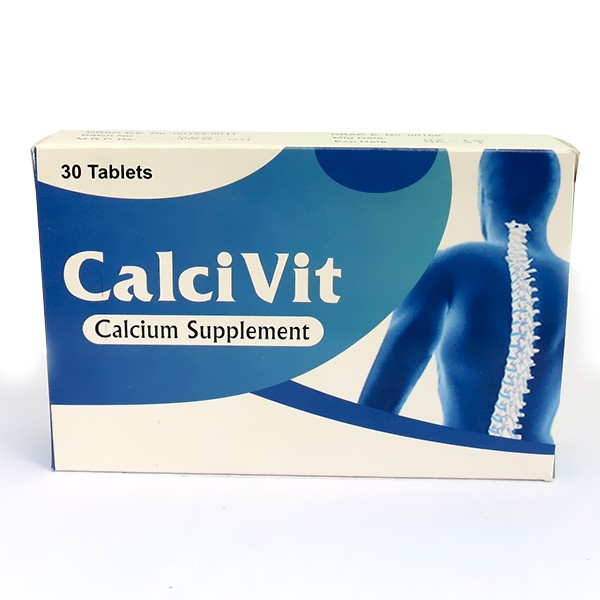





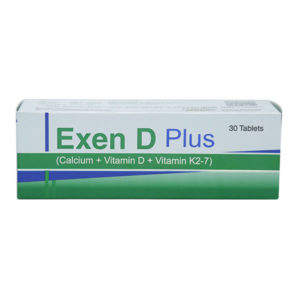
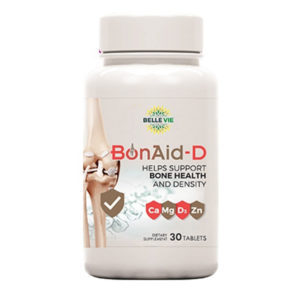

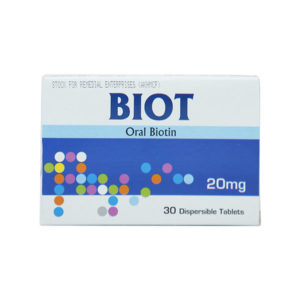
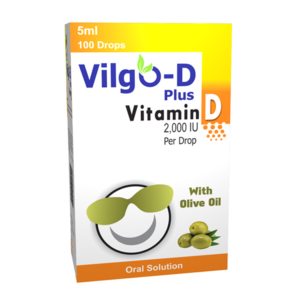


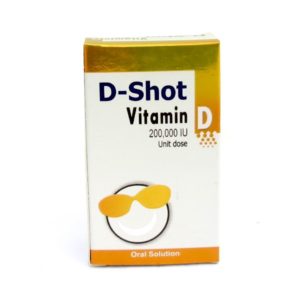

Reviews
There are no reviews yet.